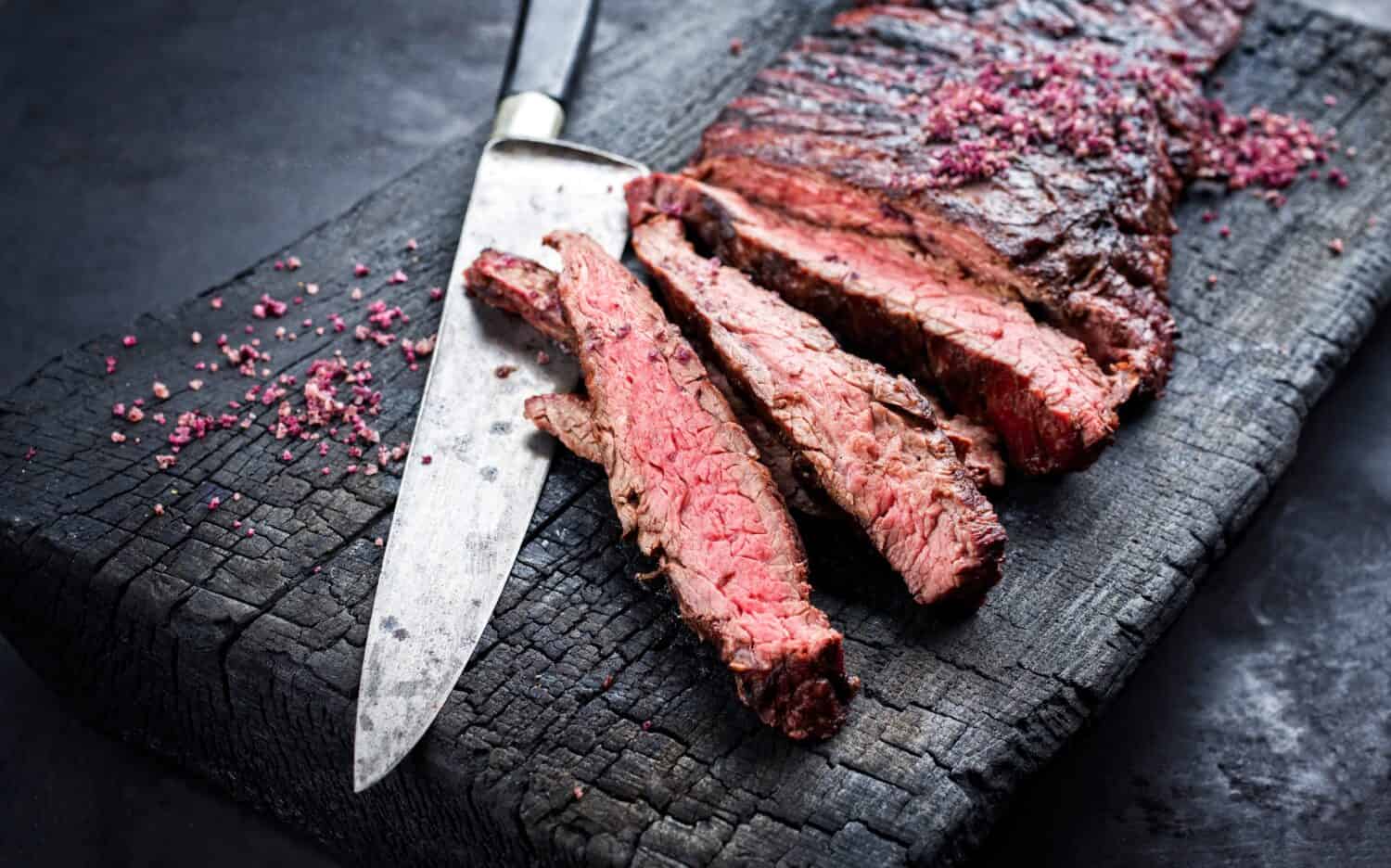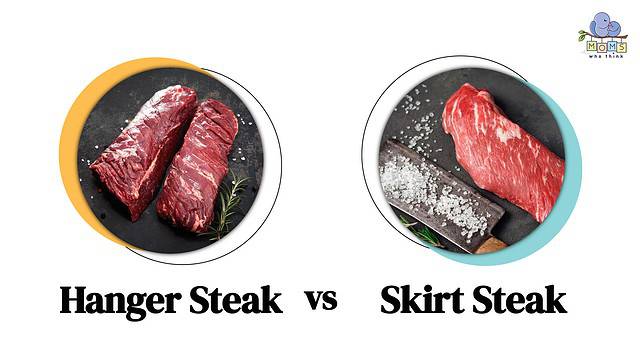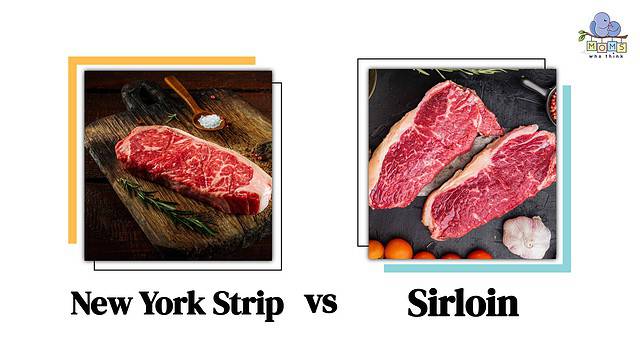Flank Steak Overview

Flank steak is a cut of beef that is known for its intense beefy flavor. It is sourced from the lower abdominal region of the cow and is leaner and less naturally tender compared to other cuts. Flank steak is characterized by its long, flat shape and distinctive grain. It is best prepared using high heat cooking methods such as grilling or broiling. Flank steak is a popular choice for dishes like fajitas, stir-fries, and steak salads due to its bold flavor and versatility in absorbent marinades.
Flank Steak: Definition And Characteristics
Flank steak is a cut of beef sourced from the lower abdominal region of the cow. It is known for its intense beefy flavor and distinctive grain. Flank steak is lean and less naturally tender compared to other cuts, but its unique texture adds to its appeal. The steak is long and flat, making it ideal for marinating and grilling. Its versatility allows it to be used in various dishes, such as fajitas, stir-fries, and steak salads. Flank steak’s bold flavor and tenderizing methods make it a favorite among beef enthusiasts.
Best Ways To Prepare And Cook Flank Steak
Flank steak is best prepared and cooked using certain techniques to enhance its flavor and tenderness. One popular method is marinating the steak for a few hours or overnight to help break down the tough fibers. Common marinades include a combination of soy sauce, garlic, and citrus juice. Grilling is the preferred cooking method for flank steak, as it allows for a smoky char and caramelization. It is recommended to cook the steak to medium-rare or medium to prevent it from becoming too tough. Slicing the cooked steak against the grain ensures a tender and juicy bite.
Flat Iron Steak Overview

The Flat Iron steak is a popular cut of beef known for its tenderness and rich flavor. It is sourced from the chuck or shoulder area, specifically the top blade muscle. This steak is named for its flat shape, similar to that of an old-fashioned metal iron. The Flat Iron steak offers a balance of marbling and lean meat, making it versatile and suitable for various cooking methods. Its fine-grained texture and distinct flavor make it a favorite choice among beef enthusiasts. Whether grilled, pan-seared, or broiled, the Flat Iron steak delivers a delicious and satisfying dining experience.
Flat Iron Steak: Description And Origins
The Flat Iron steak is a highly regarded cut of beef known for its exceptional tenderness and rich flavor. It is derived from the chuck or shoulder area, specifically from the top blade muscle. This steak gets its name from its flat, rectangular shape, resembling an old-fashioned iron. The Flat Iron steak showcases a perfect combination of marbling and lean meat, making it versatile and suitable for various cooking methods. Its fine-grained texture and distinct flavor make it a favorite choice among beef enthusiasts. Whether grilled, pan-seared, or broiled, the Flat Iron steak delivers a truly delightful and satisfying dining experience.
Cooking Techniques And Recipes For Flat Iron Steak
When it comes to cooking techniques for Flat Iron steak, popular methods include grilling, pan-searing, and broiling. To achieve the perfect medium-rare or medium doneness, it is recommended to cook the steak over high heat, searing it on both sides to form a flavorful crust. Flat Iron steak can also be marinated before cooking to enhance its tenderness and flavor. As for recipes, some delicious options include Balsamic-Glazed Flat Iron Steak, Chimichurri Flat Iron Steak, and Asian-Inspired Stir-Fry with Flat Iron Steak. These recipes highlight the inherent richness and tenderness of the Flat Iron steak, creating a memorable dining experience.
Flavor Profile Comparison

When comparing the flavor profiles of flank and flat iron steak, it becomes apparent that they offer distinct tastes and textures. Flat iron steak is known for its rich and buttery flavor, thanks to its high marbling content. This marbling enhances tenderness and provides a melt-in-your-mouth experience. On the other hand, flank steak has a more intense flavor, with a robust and beefy taste. It may not be as tender as flat iron steak, but its bold flavor makes it a favorite choice for dishes where a stronger presence is desired.
Taste And Texture Differences Between Flank And Flat Iron Steak
When it comes to taste and texture, Flank and Flat Iron Steak offer distinct experiences. Flat Iron Steak is known for its exceptional tenderness, fine marbling, and rich flavor. The high marbling content enhances tenderness and provides a melt-in-your-mouth experience. On the other hand, Flank Steak has a more intense flavor with a robust and beefy taste. Although it may not be as tender as Flat Iron Steak, its bold flavor makes it a favorite choice for dishes where a stronger presence is desired. These differences in taste and texture allow for versatility in cooking and pairing with different flavors and seasonings.
Best Seasoning And Marinade Options For Each Cut
When it comes to seasoning and marinades, Flank and Flat Iron Steaks can benefit from different flavor profiles. For Flank Steak, it pairs well with bold and robust marinades like Worcestershire sauce, soy sauce, garlic, and herbs like rosemary or thyme. These flavors complement the steak’s intense taste. On the other hand, Flat Iron Steak can be enhanced with more delicate marinades such as balsamic vinegar, honey, Dijon mustard, and spices like paprika or black pepper. These flavors help to enhance the steak’s already rich and tender characteristics. It’s important to marinate both cuts for at least 30 minutes to allow the flavors to penetrate the meat.
Nutritional Value And Health Benefits

Flank and Flat Iron Steaks both offer impressive nutritional value and health benefits. For instance, a 3.5-ounce serving of Flat Iron Steak provides approximately 137 calories, 6 grams of total fat, 2.7 grams of saturated fat, 71 milligrams of cholesterol, and 20 grams of protein. It is also rich in zinc, with 7.45 milligrams per serving. These nutrients are essential for maintaining a healthy immune system, promoting muscle growth and repair, and supporting optimal brain function. Additionally, both cuts of steak are carbohydrate-free, making them suitable for low-carb or keto diets.
Nutrient Content Of Flank Steak Vs Flat Iron Steak
When comparing the nutrient content of Flank Steak and Flat Iron Steak, there are some notable differences. Flank Steak is a leaner cut of meat, containing fewer calories and less fat than Flat Iron Steak. A 3.5-ounce serving of Flank Steak provides approximately 149 calories, 5 grams of total fat, and 21 grams of protein. On the other hand, a similar serving of Flat Iron Steak contains around 226 calories, 14 grams of fat, and 23 grams of protein. Additionally, both cuts of steak are good sources of essential minerals such as iron and zinc.
Comparative Analysis Of The Health Benefits Of Each Cut
When comparing the health benefits of Flank Steak and Flat Iron Steak, both cuts offer their own unique advantages. Flank Steak is a leaner option, lower in calories and fat, making it a great choice for individuals watching their weight or aiming for a heart-healthy diet. On the other hand, Flat Iron Steak contains slightly more fat, which can contribute to a juicier and more tender texture. Both cuts are excellent sources of protein and essential minerals like iron and zinc, which are important for overall health and wellbeing. Ultimately, the choice between the two cuts will depend on individual dietary preferences and health goals.
Cooking Methods And Tips

Cooking Methods and Tips for Flank vs Flat Iron Steak:
Flank Steak can be cooked using various methods, including grilling, broiling, or pan-searing. It is essential to cook it quickly over high heat to ensure tenderness and prevent it from becoming tough. For optimal results, marinating the flank steak before cooking can enhance its flavor and tenderize the meat.
Flat Iron Steak is versatile and can be cooked using methods like grilling, pan-searing, or even sous vide. It is recommended to cook it to medium-rare or medium doneness to maintain its tenderness and juiciness. Resting the steak for a few minutes after cooking allows the juices to redistribute, resulting in a more flavorful bite.
Regardless of the cooking method chosen, both cuts benefit from being sliced against the grain to maximize tenderness. Adding some salt or a flavorful rub before cooking can enhance the overall taste. And for those seeking a charred crust, preheating the grill or pan to high heat is advised.
Recommended Cooking Methods For Flank And Flat Iron Steak
Flank Steak is best cooked quickly over high heat to ensure tenderness and prevent toughness. Grilling, broiling, or pan-searing are excellent methods for cooking flank steak. Marinading the steak beforehand adds flavor and helps tenderize the meat.
Flat Iron Steak is versatile and can be cooked using various methods. Grilling, pan-searing, or even sous vide are great options. It is recommended to cook the flat iron steak to medium-rare or medium doneness to maintain its tenderness and juiciness. Resting the steak for a few minutes after cooking allows the juices to redistribute, resulting in a more flavorful bite.
Regardless of the cooking method chosen, both cuts benefit from being sliced against the grain to maximize tenderness. Adding some salt or a flavorful rub before cooking can enhance the overall taste. Preheating the grill or pan to high heat ensures a desirable charred crust.
Tips For Achieving Optimal Flavor And Tenderness
To achieve optimal flavor and tenderness when cooking flank or flat iron steak, there are a few key tips to keep in mind. For both cuts, it’s crucial to let the meat come to room temperature before cooking to ensure even cooking throughout. Additionally, seasoning with salt and any desired spices or marinades will enhance the flavor. When cooking, be mindful of the cooking time and temperature to avoid overcooking and resulting in a tough, dry steak. Finally, allowing the steak to rest for a few minutes after cooking will help retain its juices and maximize tenderness.
Conclusion

In conclusion, both flank steak and flat iron steak have their unique characteristics and are suitable for various dishes. Flank steak offers a leaner option with a robust beefy flavor, while flat iron steak boasts tenderness and a rich marbling that enhances its taste. The choice between the two ultimately depends on personal preferences and the desired outcome of the dish. Whether you’re grilling, searing, or marinating, both cuts can be delicious when cooked properly. Experimenting with different seasonings and cooking techniques can help you discover your favorite steak option.
Key Differences Between Flank And Flat Iron Steak
Flank steak and flat iron steak have distinct differences in terms of flavor profile and tenderness. Flank steak is leaner and boasts a robust beefy flavor, making it ideal for dishes like fajitas or stir-fries. However, it is less naturally tender and requires proper cooking techniques to achieve desired tenderness. On the other hand, flat iron steak is known for its tenderness and rich marbling, making it suitable for grilling or pan-searing. It has a buttery texture and can be cooked to perfection with minimal effort. Ultimately, the choice between the two depends on personal preferences and the desired outcome of the dish.
Which Cut Is Better For Specific Dishes Or Preferences
When it comes to choosing between flank and flat iron steak for specific dishes or personal preferences, it all boils down to the desired outcome. Flank steak’s robust flavor and lean texture make it a popular choice for dishes like fajitas, stir-fries, or salads. On the other hand, flat iron steak’s exceptional tenderness and rich marbling shine in grilled or pan-seared dishes. Its buttery texture and juicy flavor make it a delightful option for steak lovers. Ultimately, the decision between flank and flat iron steak hinges on individual tastes and the culinary experience one seeks.
FAQ About Flank Vs Flat Iron Steak: Beef Steak Showdown
Q: What is the main difference between flank and flat iron steak?
A: The main difference lies in the location of the cut on the cow. Flank steak comes from the lower chest or abdominal area of the cow, whereas flat iron steak comes from the shoulder region.
Q: Which cut is more tender, flank or flat iron steak?
A: Flat iron steak is generally more tender than flank steak due to its location on the cow, which is not as heavily used, resulting in a more tender texture.
Q: How should each cut be cooked for optimal flavor?
A: Flank steak is best cooked quickly over high heat and is recommended to be cut against the grain for tenderness. Flat iron steak can also be cooked quickly but benefits from a slightly longer cooking time to enhance its tenderness.
Q: Which cut is more suitable for grilling?
A: Both flank and flat iron steaks are excellent options for grilling. Flank steak is best when marinated beforehand to enhance its flavor, while flat iron steak can be grilled as is due to its inherent tenderness.
Q: Can these cuts be used interchangeably in recipes?
A: While both cuts are delicious in their own right, they have distinct textures and flavors. It is recommended to use flank steak in recipes that call for a chewier texture and flat iron steak for a more tender experience.

Salsas by Karoll’s Catering is a vibrant and innovative Canadian fusion family restaurant that welcomes you to indulge in a delightful culinary experience. Every Sunday, from 11 am to 2 pm, we invite you for a delicious brunch that will tantalize your taste buds. Whether you prefer dining in or taking out, we ensure that our delectable dishes are available to savour at your convenience. In addition to our enticing Sunday brunch, we host a lively happy hour every Thursday, Friday, and Saturday. During this time, you can enjoy discounted food items, get $2.50 off on beer, and sip on refreshing $5 margaritas. It’s the perfect opportunity to unwind and relish in the flavours of our Canadian fusion cuisine.